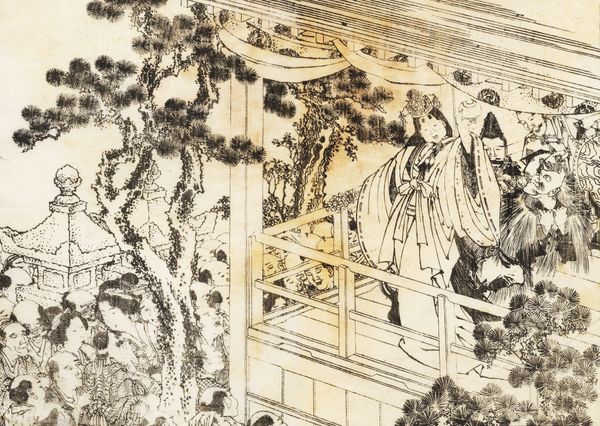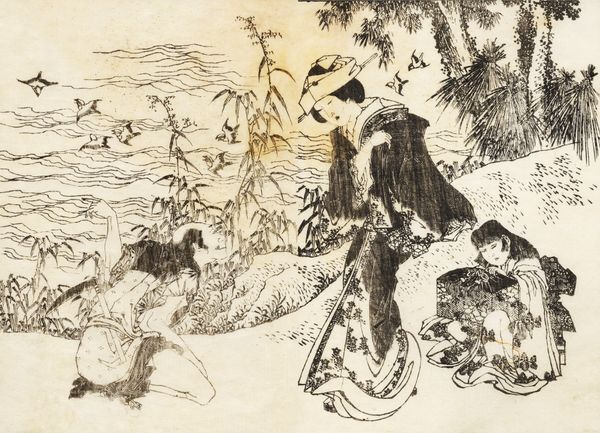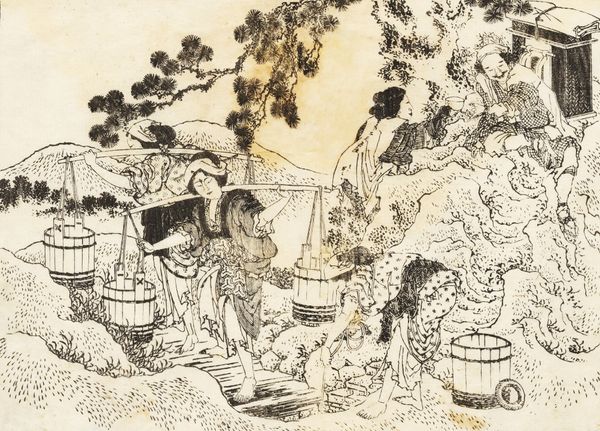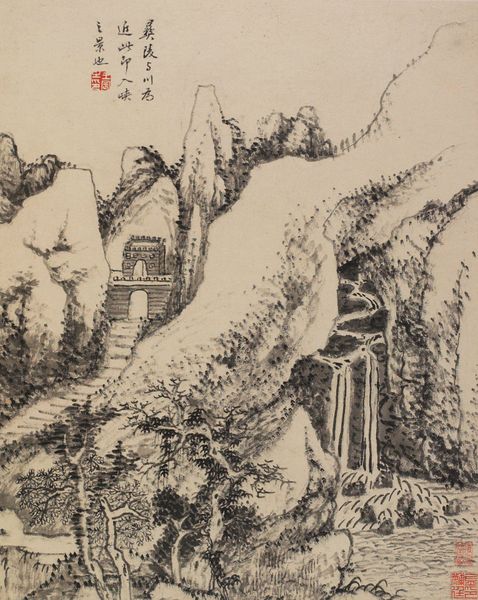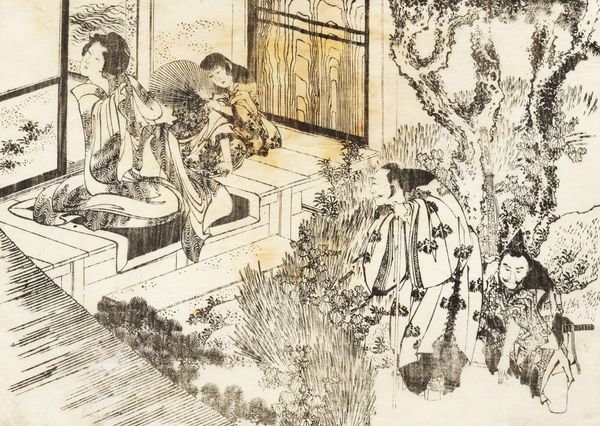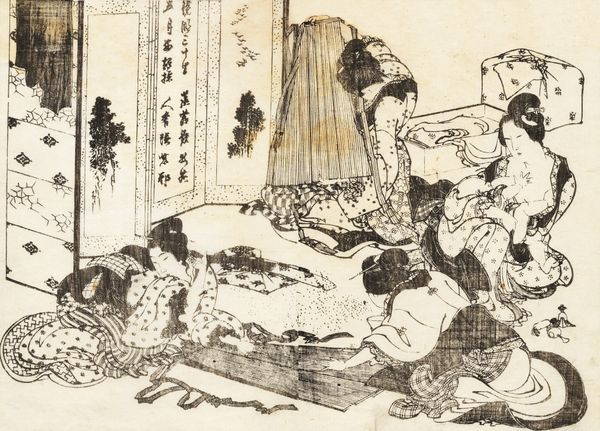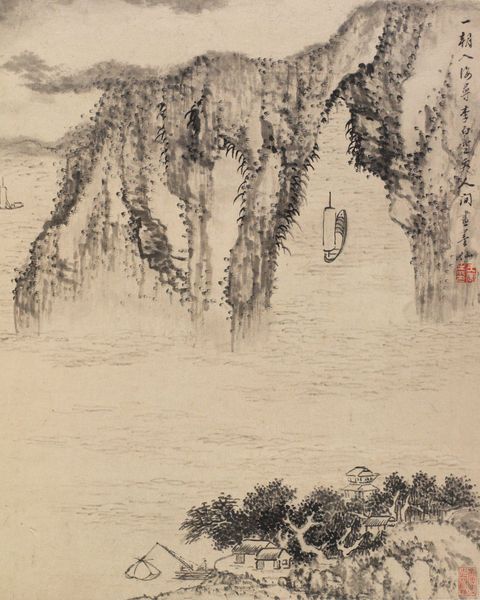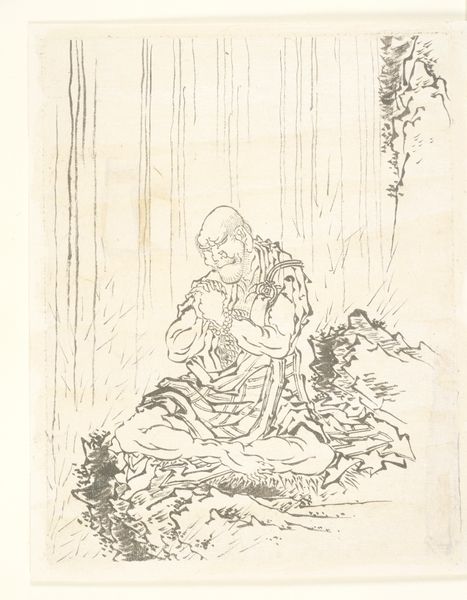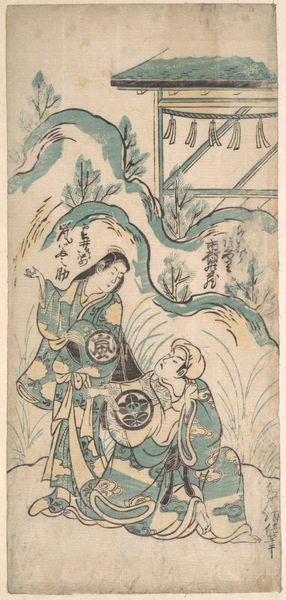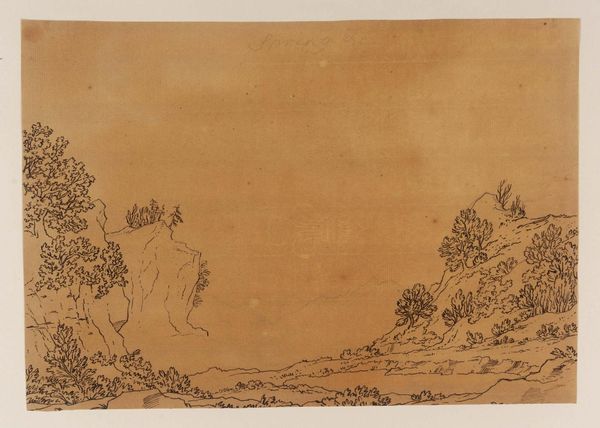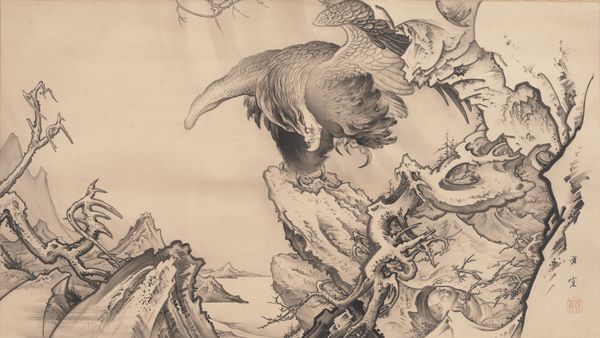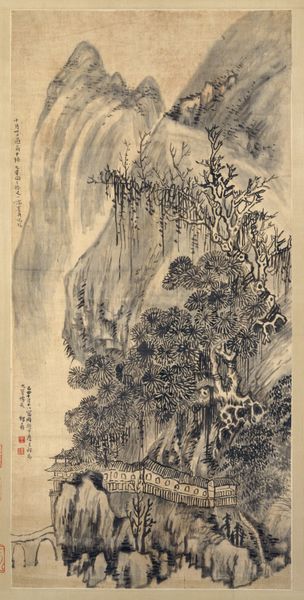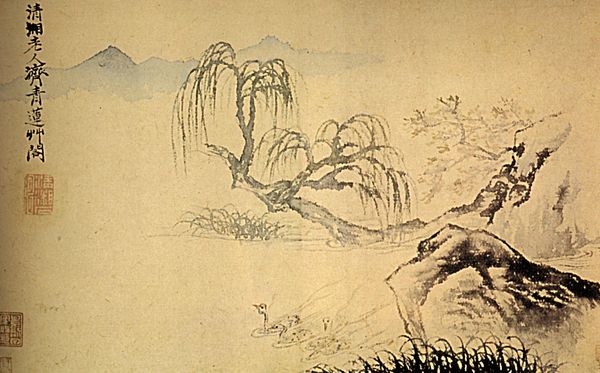
drawing, ink
#
portrait
#
drawing
#
asian-art
#
landscape
#
ukiyo-e
#
ink
#
yamato-e
Copyright: Public domain
Curator: This drawing, titled “Oiran, a special beautiful courtesan,” is credited to Katsushika Hokusai. The medium is ink. Editor: It's strikingly graphic, in its contrasts and textures, almost austere despite depicting a subject often associated with luxury. The density of ink is pretty remarkable, isn’t it? Curator: Yes, let’s consider the material reality of ink production in Edo-period Japan. We know the precise techniques employed to create such tonality, using varying pressures and dilutions. Think about the kaolin clay and lampblack… Editor: While also understanding this specific drawing situates within ukiyo-e traditions, and represents a member of a marginalized group often objectified in artwork of that era. The courtesan stands at the apex of a rigidly defined gendered and social hierarchy. Curator: Absolutely. The material conditions shaped social structure. The tools—the brushes, the paper, and even the pigments—reflect a rigorous training system, limiting access to elite circles and artistic production based on skill but also availability to tools and training. Editor: But is that hierarchy being interrogated here, or simply reified? Look at the male figure obscured behind veils of mist and geography. It gives him prominence over the oiran, seemingly relegated by this depiction of place as one that cannot see all. Who has authority? Curator: I see your point about the compositional elements. Consider that this scene does include Yamato-e painting style, as well as ukiyo-e which provides interesting lens for how the artwork gets made as it relates to nature as well as the daily life, and a lens in which these stories get told. But that still connects to modes of making: apprenticeships, workshop models, and hierarchies of labor essential to ukiyo-e prints. Editor: So much more than an pretty face! I wonder if examining gender in conversation with natural landscapes shows both women’s subordination and potential empowerment. The figure looming feels ominous. Curator: We are examining gender and power relations at their intersection with production means! So how do we move towards wrapping it up? Editor: For me, it's thinking through whose story we are seeing, even in its graphic beauty. Curator: Right, and it's been good to explore how an artwork that celebrates the beauty of labor, and shows its value.
Comments
No comments
Be the first to comment and join the conversation on the ultimate creative platform.
